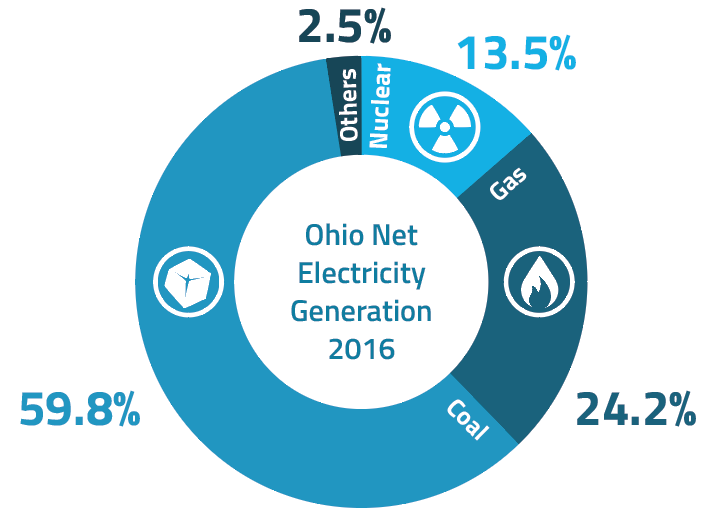While lawmakers have stopped the case of nuclear subsidies, pro-nuclear activists are calling on Amazon to save the state’s two plants
By Janis Kreilis
Nuclear power has seen better days. Natural gas, made abundant and cheap by the shale boom in Pennsylvania and Ohio, has become the fuel of choice for power plants in the Northeast. As wholesale electricity prices have fallen accordingly, nuclear and coal plants – both of which typically fulfill the same role of providing baseload power – have struggled to compete and have announced shutdowns in New York, Illinois, and Ohio, to name a few states.
On its face value, replacing one resource with another should make no difference in the competitive wholesale markets: as long as the price is right, the markets should provide for an efficient outcome.
The catch, however, is in the externalities both nuclear and coal bring. While environmental advocates celebrate the conversion from coal to gas, as the latter is a much cleaner-burning resource and therefore produces less carbon dioxide, nuclear emits no carbon at all.
Without it, some states will struggle to meet their renewable generation goals. Take Ohio; nuclear supplied 13.5% of its overall electricity in 2016 but more than 90% of the state’s total renewable electricity. The state’s two nuclear facilities – Davis-Besse and Perry – also employ roughly 1,400 people, and their operator FirstEnergy had announced early shutdowns recently.

Source: OH PUCO via EnerKnol
No wonder that in April 2017, Ohio lawmakers followed in the footsteps of New York and Illinois, proposing a nuclear subsidy to compensate the two plants for the carbon-free electricity they generate.
However, after a month and a half, the Ohio House of Representatives has suspended hearings on the case based on FirstEnergy’s comments that the subsidies will likely come too late to prevent the shutdowns. According to the chair of the House utilities committee, the lawmakers did not seem too eager to pass the subsidy bill either.
In a quick turn of events, nuclear advocates have come up with a different solution to save Ohio’s facilities. Last week, a group of leaders in clean energy, science, and business penned a letter to the CEO of Amazon, Jeff Bezos, asking the company to include nuclear in its renewable energy procurement program.
America’s corporate giants – Amazon, Google, Apple, Microsoft, and others – have pushed ahead with their own policies to make their energy procurement greener by building or purchasing power from solar and wind farms. Amazon Web Services – the cloud-computing arm of the online retailer – has set a long-term goal for itself to use only renewable energy. By the end of 2017, the firm plans to achieve half of that goal.
Should Amazon widen its scope and include nuclear as a form of carbon-free electricity, the authors of the letter argue, the two facilities could be saved, avoiding another spike in natural gas consumption in Ohio. The move shifts the conversation away from the long and often complex legislative process towards a question of corporate policy, which could alone be sufficient for providing the same policy outcome – saving the plants – because of Amazon’s corporate clout.
According to the Advanced Energy Economy, corporate renewables procurements reached 3.2 GW in 2015, and 71 of Fortune 100 companies had some sort of a target on renewables or sustainability. Given their size, the supply chain decisions of companies like Amazon could leave just as much impact on the energy industry as the decisions by the government.
Will Amazon start a new trend? The answer to that question could be a matter of life and death for nuclear plants in Ohio and elsewhere.

